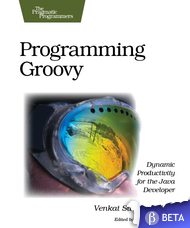Programming Groovy: Metaprogramming no longer an afterthought
I recently finished a tech review of Venkat Subramaniam’s upcoming book from the Pragmatic Programmers, Programming Groovy: Dynamic Productivity for the Java Developer, and I was pleased to find that Venkat included a healthy dose of “the red pill.”

Scott Davis’s red pill/blue pill metaphor is spot on …
You take the blue pill, the story ends, you wake in your bed and you believe whatever you want to believe.
Many developers (and almost all Groovy tutorials and books to date) are still focused on the more conservative features of the Groovy language. Admittedly, the conveniences offered by that slice of Groovy are nothing to scoff at, but it’s frankly short-sighted to stop there. After all, it’s metaprogramming (i.e., the red pill) that gets the credit for much of the coolness that one experiences in a Grails app. And without metaprogramming, Groovy wouldn’t have a chance in the DSL world.
Venkat clearly wasn’t content to let Groovy metaprogramming continue to take a back seat. Instead, he’s dedicated four whole chapters to this important topic. By page count, that’s more than 20% of the book! And that’s not even counting the numerous cameos that metaprogramming makes in other chapters, especially in the discussions on testing and DSLs. Want to know when to use #invokeMethod versus #methodMissing? Venkat’s got you covered. Need to get your head around categories, expandos, and the ExpandoMetaClass? You’re all set. Not sure how to differentiate between method injection and method synthesis? Not for long.
The beta book is available now. Of course, it’s beta, so you’ll have to be forgiving of the areas that still need some polish. But whether you check out the book now, or you wait for it to graduate from beta status, the red pill awaits. Bottom line: You simply won’t find a more comprehensive resource for getting up to speed on Groovy metaprogramming.